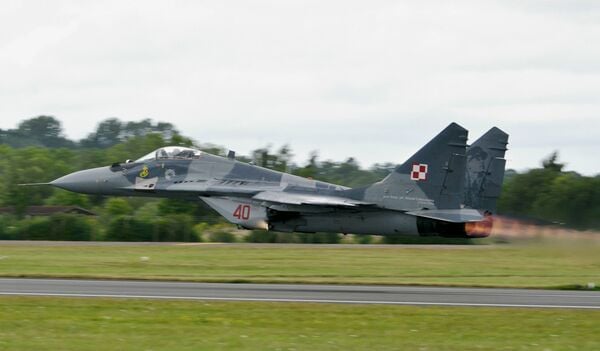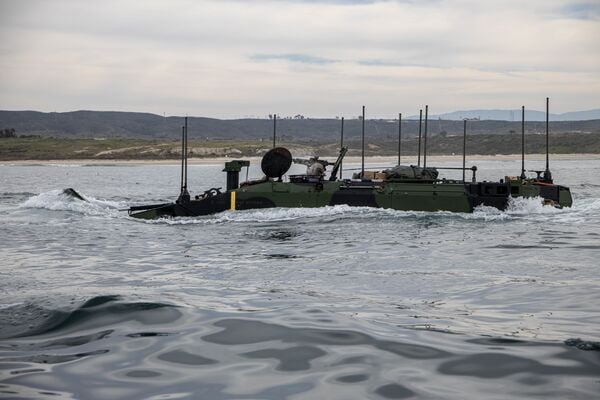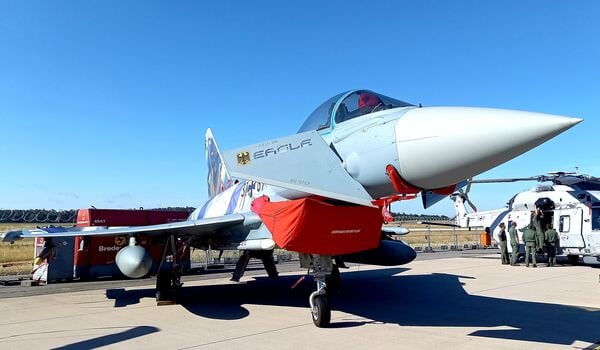- About
- Intara
- Capabilities
- Advisory
- Resources
- News
- Store
Ukraine conflict: Poland agrees to the immediate transfer of MiG-29s to Ukraine, urges other NATO operators to do the same
09 March 2022
by Gareth Jennings


Poland has agreed to the immediate transfer of its entire fleet of MiG-29s to help the war effort in Ukraine. (Janes/Patrick Allen)
Poland has agreed to the immediate transfer of its entire fleet of MiG-29 ‘Fulcrum' combat aircraft to help the war effort in Ukraine, and has urged other NATO operators of the same type to do the same.
The Polish Ministry of Foreign Affairs announced the decision in a statement released on 8 March, reviving the seemingly moribund European Union (EU) plan of the week before to transfer to Kyiv the Soviet-era fighters that the Ukrainian Air Force is trained and equipped to fly.
“The authorities of the Republic of Poland, after consultations between the president and the government, are ready to deploy – immediately and free of charge – all their MiG-29 jets to the [US Air Force's] Ramstein Air Base [in Germany], and place them at the disposal of the government of the United States of America,” the ministry said. “At the same time, Poland requests the United States to provide us with used aircraft with corresponding operational capabilities. Poland is ready to immediately establish the conditions of purchase of the planes. The Polish government also requests other NATO allies – owners of MiG-29 jets – to act in the same vein.”
The announcement partially solidifies a plan announced by the High Representative of the Union for Foreign Affairs and Security Policy, Josep Borrell, on 27 February, in which he said that Bulgaria, Poland, and Slovakia would transfer their MiG-29 fighters (and Sukhoi Su-25 ‘Frogfoot' ground attack aircraft in the case of Bulgaria). “We are going to provide even fighting jets,” Borrell said. “[Kyiv] has been asking us that they need the kind of fighting jets that the Ukrainian [Air Force] is able to operate. We know that some [EU] member states have these kind of planes, and the western borders of Ukraine are still open and several [of these] member states have a border with Ukraine.”
When the plan was first announced, it was reported that the US would look to backfill these donated aircraft with Lockheed Martin F-16 Fighting Falcons that are in service with Poland, and which are on order for Bulgaria and Slovakia. It is this that the Polish Ministry of Foreign Affairs referred to when it said that it “requests the United States to provide us with used aircraft with corresponding operational capabilities”. While this would work for Poland, which operates the F-16, for Slovakia and Bulgaria, it would require that NATO fighters are permanently located on their soil until such time as it has air and ground crews trained on the type and deliveries of those aircraft on order are commenced.
As noted by Janes World Air Forces, the Polish Air Force fields 21 single-seat and six twin-seat MiG-29s; the Bulgarian Air Force fields 11 single-seat and three twin-seat MiG-29s; while the Slovak Air Force fields nine single-seat and two twin-seat MiG-29 aircraft (although only a small number is thought to be in an airworthy condition). The Bulgarian Air Force also fields six single-seat and two twin-seat Su-25s. If these aircraft were to be donated, the Ukrainian Air Force could receive as many as 52 MiG-29s and eight Su-25s.
While Poland has confirmed its intent to deliver its MiG-29s to the US for onward transfer to Ukraine, neither Slovakia nor Bulgaria had declared their intentions at the time of publication. By way of caution, that this ‘on/off' plan to transfer the MiGs to Ukraine is not yet certain despite the Polish government's announcement, the US Department of Defense noted shortly after the statement was made, “We have seen the Polish government's announcement. We have nothing to offer at this time.”
USMC debuts amphibious vehicles in exercise with Philippine armed forces
06 May 2024
by Ridzwan Rahmat


A file image of a USMC ACV from 2022. The service marked its first employment of the ACV at an overseas exercise during ‘Balikatan' 2024 in the Philippines. (US Marine Corps)
The US Marine Corps (USMC) has marked the first employment of its amphibious combat vehicles (ACVs) in an overseas military exercise.
This milestone was accomplished on 4 May when ACVs from the 15th Marine Expeditionary Unit (MEU) splashed down into Oyster Bay on the Philippines' Palawan Island from US Navy (USN) landing ship dock USS Harpers Ferry.
It was done as part of the 2024 iteration of Exercise ‘Balikatan', a bilateral drill between the Armed Forces of the Philippines (AFP) and the US military.
As part of the amphibious manoeuvres, the ACV platoon organised itself into assault sections in the water after being launched from Harpers Ferry, the USMC said in a 4 May statement.
The vehicles then engaged multiple shore-based targets using their remote weapons systems to control externally mounted Mk 19 40 mm grenade machine guns.
These weapons were co-ordinated and fired simultaneously while afloat to maximise the effect against the targets at shore, the service added.
Chinese bomber launches new ballistic missile
03 May 2024
by Akhil Kadidal


China first unveiled the new ALBM in November 2022, during AirShow China 2022. At the time, the two missiles unveiled had a yellow stripe and a code signifying that they were training missiles (as shown in the image, in the top part of this graphic). Recent imagery shows the ALBM in a low-observable grey-blue colour scheme, indicating that the missile is progressing to production. (Janes/Gettyimages)
China's People's Liberation Army (PLA) has released a video showing a Xi'an H-6K strategic bomber launching a new ballistic missile in flight.
Imagery of the air-launched ballistic missile (ALBM) being dropped from the H-6K was included in an official PLA video released on 1 May. In the video, the new missile is dropped from the port side wing pylon of an H-6K. The missile, which has the tentative designation of KD-21, is not shown igniting its engine.
The new ALBM is potentially a hypersonic missile, similar to the Russian Kh‐47M2 Kinzhal (AS-24 ‘Killjoy'). Janes has previously assessed that the KD-21 ALBM is likely powered by a solid-propellant rocket engine. However, it is unclear if the KD-21 in the recent video was equipped with an engine.
Luftwaffe yet to decide on final Tornado replacement numbers
02 May 2024
by Gareth Jennings


A Luftwaffe Eurofighter on the flightline at the 2022 ILA Berlin Airshow. The service has told Janes that it does not yet know how many additional aircraft it will buy to replace the 90 Tornados being retired. (Janes/Gareth Jennings)
The German Luftwaffe has not yet determined how many new combat aircraft it is to acquire to replace its fleet of Panavia Tornados, a senior service official told Janes on 2 May.
Responding to a request for clarification and confirmation of the 85 new aircraft figure previously given by industry officials, Commanding General of Air Force Forces Command, Lieutenant General Günter Katz, said the Luftwaffe had never formally declared a one-for-one replacement of the Tornado, and that “a new target number does actually not exist”.
Poland has agreed to the immediate transfer of its entire fleet of MiG-29 ‘Fulcrum' combat aircraft ...
Latest Podcasts
Using OSINT to support law enforcement
Ritu Gill, Intelligence Analyst, joins Harry and Sean to discuss the practical use of OSINT to support law enforcement. Ritu discusses it’s use in supporting risk assessments and classified or closed sources of intelligence. She also discusses t...
Listen nowJanes Case Studies
Using Janes Intara to build a common intelligence picture: Russian build up on the Ukrainian border
View Case StudyNews Categories
 Air Details
Air Details